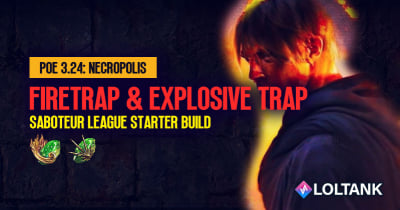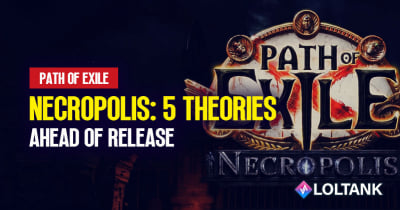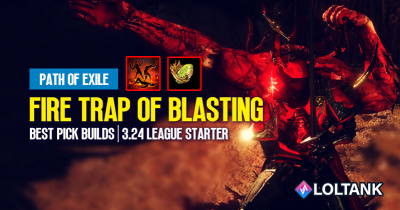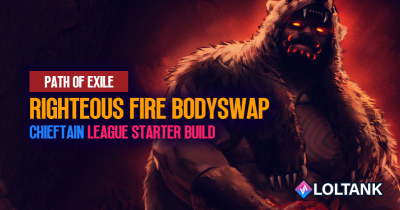My Time at Sandrock Role play and construction in an almost unique mix
- LOLMobileFans
- Share
- Games
- 06/06/22
- 803
My Time at Sandrock could ring a (pasture) bell for one or the other because it is the sequel to the role-playing farm game My Time at Portia. This time, however, neither cabbage nor turnips will be planted! No, because Sandrock replaces the lush, green meadows of the prequel with a western town in the heart of a sandy desert - and puts us there as craftsmen in front of workbenches, kilns, etc.
Sandrock combines its complex crafting chains with action-adventure and role-playing in a motivating way that building bookshelves and cable car gondolas are amusing. Besides that, we can even scatter on a full-fledged clone of the PvP hit Witch It! That's tricky, as social and economic simulations also live a little from the genre-typical idyll.
That's a lot of content for an Early Access title that's supposed to be in development for at least a year. And in fact, technical edges still have to be ground down, and temporary monotony has to be fought with more events. But fans of Stardew Valley, building games, and role-playing mechanics can already immerse themselves in My Time at Sandrock for weeks.
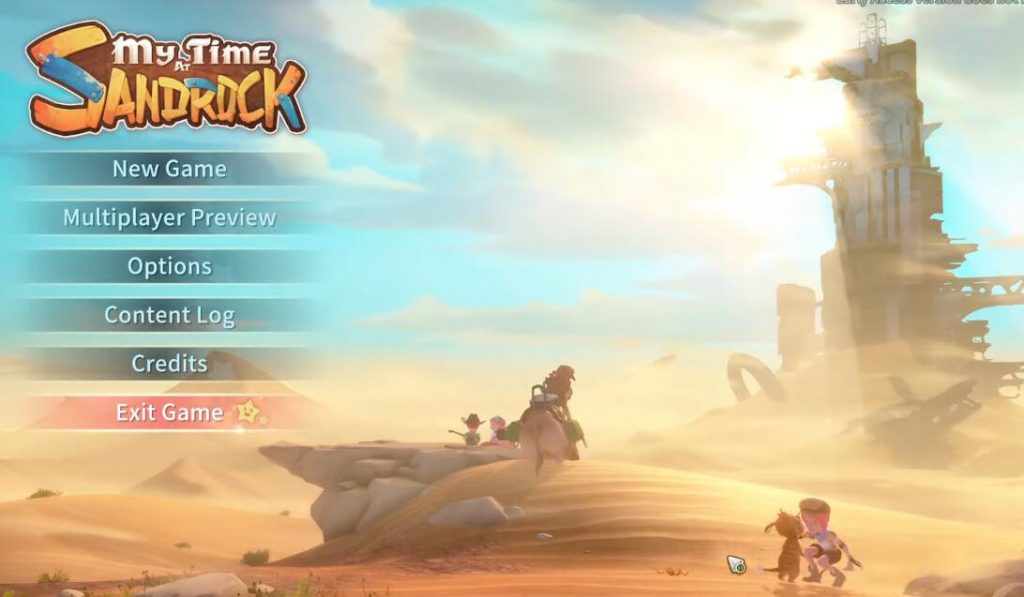
It suits you if…
You are fond of complex farming and life simulations.
You want to be motivated to craft an entertaining story.
You don't just like western settings because of the Colts.
It doesn't suit you if…
You find the building, improving, and maintaining things boring.
You disinterestedly click away dialogues with non-player characters.
You want to experience an exciting and twisting story.
Cute Wild West
We are relatively free to decide with what kind of main character (male or female) we try our luck as a craftsman in the semi-open world of Sandrock. To do this, we have at our disposal a character editor with 13 customization categories, starting with the skin color and ending with the black metal face tattoo.
Finished? Then we pull into the station of the Wild West town of Sandrock aboard a puffing steam train. Well: in the post-apocalyptic Wild West town, because our civilization went down the drainages ago, Fallout says hello. Why? Well, we're groping in the dark about this for the time being.
The explanatory bear Mi-an is already waiting for us on the platform, a tutorial that has become a child with a white boiler suit and aviator goggles. We learn interesting facts about her and the other droll residents (including a rapper, a ship captain, and a grumpy battle cat). For example, a handyman job application brought us here, and we took over the workshop of the retiring master-builder Mason. Mi-an has also occupied the workplace of a retiree and accompanies us through many story assignments.
The craftsmanship of golden soil
Our main task is to use our craftsmanship to help the economically ailing Sandrock to its former glory. We take advantage of the beautifully designed settlement built on the ruins of a metropolis from the Old World. Among other things, data discs are buried there, which we use to reproduce forgotten technology. And that's precisely the key to a thriving city in the middle of the fart-dry sand desert.
It all sounds exciting but also very laid back - and in fact, Sandrock's story is just as little about dramatic earthquakes as it is about unexpected twists and turns. The obligatory evil in the form of the masked train robber Logan and the crazy Geegler are brought in twice. But their job is only to accentuate the story funnily and bring variety to the main crafting event, which they also do exceptionally well.
The Googlers – wonderfully goofy lizard people – lift the spirits by gigglingly filling Sandrock's oasis with rubbish (and we then get to clean up the crap). They also lead us on entertaining underground story missions, where we once board up a significant Gengler loophole.
In contrast, Logan's appearances are initially limited to cutscenes that raise questions about why he and his gang regularly raid the Sandrock Express. In any case, valuables don't seem to interest the mysterious bandits, the kidney bean.
All the central contracts, in which we build big things like an elevator in line with the story, were rolled into occasional cinematics and voiced by good English voice actors. The German subtitles for our chat with the sand rockers read varied and neat in the Early Access version. However, some tutorial translations are missing altogether, so the relevant windows are empty.
A translation AI also seems to be raging around in some places because who else would translate "draw" with "drawing"? Well, we found our way around well in the test.
Work, work, build workshop.
The desert workshop that we move into in Sandrock consists of a small house with a bed, a water tank for power supply, and an open-air construction stage - that's it. It's up to us to fill the small Early Access lot with up to 40 crafting machines, including their upgraded editions.
Our most important working tool is the crafting table since most objects can be made with it. All other devices work fully automatically and are suitable for mass production. The recycler reads useful things from collected scrap, the kiln produces bricks or steel rods, and the sewing machine spits out various protective clothing.
Most of the clothes noticeably protect against enemy attacks and significantly increase our few fundamental values of attack, defense, critical hit rate, and luck. Incidentally, the latter's effect remained hidden from us in the test.
On the other hand, with the "sand equipment," we protect ourselves from the occasional sandstorms through which we can otherwise only move with incredible difficulty. Storms also layer sand around our equipment, so we should "sand wipe" vigorously with a feather duster after a storm.
Considerable effort, big reward
If we want to work on better variants of our grinders and awnings, they first have to be researched by the local scientist - the nerdy Mr. Qi. For this, the excellent guy often needs several in-game days and the already mentioned data disks, which we obtain by knocking on stones on the eleven levels of the futuristic ruins.
This is exciting, by the way, because access to the next level is carefully hidden behind rubble and rubble. A jetpack is, therefore, often used in our search.
In addition to Qi, the elegant master-builder Heidi also plays a role because, with her help, we will later expand our house and yard. Later, it takes a while to make the components needed for this. This is especially true for horse stables, chicken coops, and the rabbit run, which cannot be built without upgraded equipment and rarer resources. In this respect, this part also recedes into the background.
But we are allowed to ride early in the game; Sandrock has a cheap horse rental. We ultimately save the feed money since Sandrock's horses don't eat anything and are still easy to ride.
Speaking of which, money is one of the higher hurdles placed in-game progress. We often have to buy expensive crafting recipes or resources locally, so we can't help but stock up on "build me a storage box"-style drawing board orders. But this only works once a day and is often not easy!
Sandrock's crafting system is sometimes reminiscent of the A38 pass because to build an item A, and we almost always need items B, C, D, and E. On the one hand, this means that artisans who work on multiple tracks often lose track of things. In addition to orders, better workbenches and mining equipment are also waiting to be completed.
The great way My Time of Sandrock rewards player effort gives it a unique appeal. On the other hand, it releases tons of happiness hormones when we rush down to the ruins in the self-made lift for the first time. Or have given a stage to a somewhat choppy dancing country duo as part of the still too few city festivals.
A barren desert
The slightly less exciting part of the game is the mob populated and only functionally sized dessert, reminiscent of old N64 titles with its washed-out textures. The performance in the outdoor areas is correspondingly good - it becomes more difficult with the advent of high-impact objects such as workbenches with lighting. Then the frame rate is temporarily below 30 FPS, even on solid hardware.
We get the most resources from the desert by stepping in front of cacti, chopping down deadwood with the bronze ax, or smashing rocks with the pick hammer. But be careful: This drains our stamina bar, after which only snacks or a hat full of sleep will help. Sleeping is mandatory from 3 a.m. – if our alter ego is not up and about, it collapses on the spot and starts the next day weak.
There are also experience points for dismantling, which lead to the next level up. The character attributes will then improve automatically, while a skill tree with currently 13 categories of knowledge will allow us to increase the experience points gained through various activities.
Opponents you don't want to beat up.
When farming, the ingeniously funny designed opponents, which include honey-carrying ants and grumpy yaks and "bangers" armed with firecrackers, only partially attack us. The icons above the animals' heads are helpful here, providing information about their aggressiveness.
Over time, we have several swords with identical handling and, of course, Colts at our disposal for real-time battles. We defend ourselves by rhythmically or quickly clicking our skin in close combat, so we vary the few combinations of hits. It's more fun with the pistols since we can target individual parts of the body here in target mode and cause more damage, for example, by hitting the head.
Technically, there is hardly anything to criticize about the skirmishes. The difficulty of the regular encounters alone is far too low, while it escalates in leaps and bounds in boss fights - this has yet to change for more combat fun. Incidentally, death is never reset in Sandrock, but it is fair. Nor do we lose anything from our inventory after a defeat. Conclusion: On the way to the oasis
Conclusion: on the way to the oasis
In version 0.4.3, My Time at Sandrock impressively shows that a farm simulation doesn't have to wither in the sandy desert. The western setting in the post-apocalypse produces a variety of crafting orders that are cleverly interwoven with the entertaining story about the economic boom and crazy lizard people.
Of course, early access-typical technical deficiencies and dry spells in terms of content can be found mainly at city events. This sometimes creates a certain grind feeling – despite the great mini-games. Also, most of the fights are way too easy.
However, the recently published roadmap hopes that such shortcomings will eventually be eliminated. And then Story of Seasons, the reference for farm simulation, would have some extreme competition.
Most Popular Posts
- Valheim: Chains farms and benefits
- Arena Of Valor Tops the Global mobile game revenue list
- Warframe - Just how to obtain an orokin reactor
- Guide to Stuff Ouginak on Dofus, Items Dofusbook
- Lords Mobile To unlock and improve your troops on level 5
- Release of new game MMO and multiplayer games from 2021 to June 28, 2021
Popular Category Lists
- Path of Exile / (873)
- Diablo IV / (702)
- Runescape / (344)
- New World / (172)
- WoW Classic SoD / (171)
- Guild Wars 2 / (159)
- Elder Scrolls Online / (138)
- FFXIV / (135)
- World of Warcraft / (65)
- WOW Classic / (43)
- Elden Ring / (40)
- Throne and Liberty / (36)
- SWTOR / (35)
- Albion / (35)
- Last Epoch / (32)
- League of Legends / (30)
- Dark and Darker / (28)
- Fallout 76 / (27)
- WotLK Classic / (23)
- Genshin Impact / (22)





 0
0

